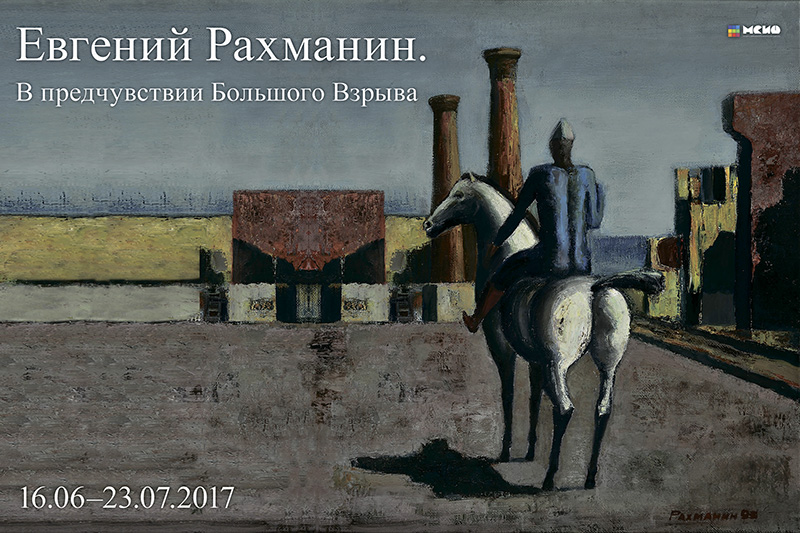In anticipation of the Big Bang
14.06.2017 2023-11-20 17:10In anticipation of the Big Bang

Depending on the huge number of external reasons that determine the author’s view at the moment of creation, the temperature of his universe fluctuates in a wide range. At times it seems that he creates landscapes like extreme reportage photos – being on an accidentally preserved island inside a boundless lava flow from an awakened volcano. Sometimes the environment stabilises, the riot of colours and the temperature of compression diminishes. But everything is relative – Rachmanin does not need snow. This metaphor of purity comes from another world – “…here the climate is different”. The higher, Zen purified from everything, thoughts and feelings are centred in the mountains. Unlike the banks of the estuary, the mountains are always highlighted with clear contours, emphasising the stability of eternity. In Eugene’s works they are a model of the world and are painted as the artist saw them, being among them. From a fairly realistic landscape of the 80-90s to almost fantastic in colour solutions modern works. This is where emotions, the symbol of eternal hot matter, the future volcano, the epicentre of the Big Bang.
The artist observes and describes various forms of matter existence: objectless and quite concrete; frozen and expressive. There is no stable correlation between these seemingly contraversive zones. The shores of the Odesa estuaries, frozen in the morning haze or afternoon sunlight, look like expressive abstractions, while impregnable mountains and everyday minimalist still lifes are subtly similar to powerful abstract compositions created simultaneously.
The abstractions are a logical development of Rachmanin’s mountain series. Although the reverse is no less true. The author does not really care about the degree of subject matter he depicts. Abstraction is a constant form of the Artist’s work. The range of works is great: from minimalistic combinations of monochrome flat areas to expressive compositions.
As a true Zen Buddhist, he concentrates on studying, registering and cognising the stages of development of the Universe. For him, mountains are first of all the epicentre of concentration and tension of compression energy, and the shores of estuaries are the zone of temporary dissipation of accumulated energy. Humans are an accidental element caught in the process of cosmic scales. Even the intrepid vandal rider froze in front of the ruins of a ruined city, unwilling to accept him. Still lifes are a method of emphasising the role of certain objects that are most symbolic to the author at the time the work was created.
It is interesting to try to understand the driving motives behind the artist’s transformation of these basic and permanent objects. At first glance, one might argue that in the process of creation “the tension and complexity of colour compositions and images increases”. But almost immediately one discovers works created, as if on purpose, to emphasise the author’s honesty and self-criticism in seeing the opposite effects.
The turbulent flow of energy inside the compressed, tense, hot Universe is the only state of the World that interests Eugene Rachmanin, a wise philosopher who appreciates every moment and has learned a little about the past and the future.
The exhibition uses new and early works provided by the author, from the collection of the MoOMA, as well as from the collections of:
Sergei Bogolyubov, The Vernik family, Vyacheslav Vyrodov Eugene Golubovsky, Eugene Demenk, Lyubov Zaeva, the Kostin family, Nedranets family, Vyacheslav Stoyanov.
INFORMATION ABOUT THE EXHIBITION AND CONTACTS:
The exhibition is timed to coincide with the anniversary of Eugene Rachmaninoff.
The vernissage will take place on 16 May at 6 p.m. at the Museum of Odesa Modern Art.
